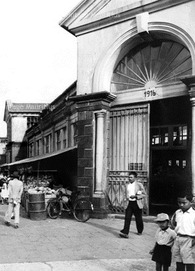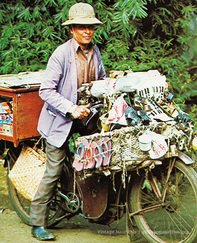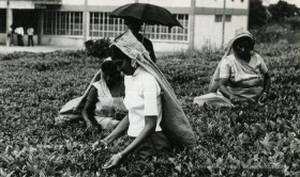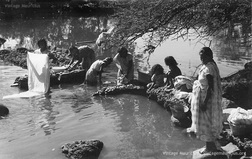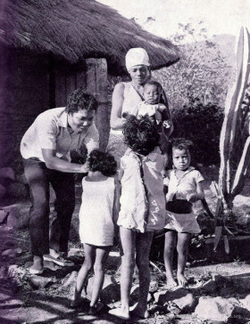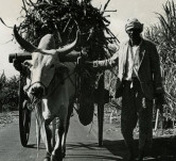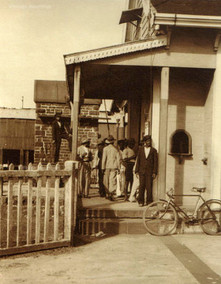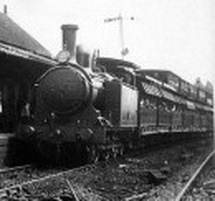Curepipe
|
|
Tea Plucking in Nouvelle France at Chartreuse Tea Factory in 1960s
Mauritius has been cultivating tea since the french colonial times and even today tea is still being cultivated around various upper lands of the country. True to say that the number of Tea Factories have certainly declined but the plantations have remained. As most societies around the world, tea forms part of an important part of the Mauritian culture. It can be said that the island is self-sufficient in its tea demand.
|
Washerwomen in the river at
|
Simple Village Lifestyle Family Living in Straw House in 1970s
Away from the buzz of urbanism, this little family of the 1970s living in a straw house somewhere in a village in Mauritius didn’t ask for much. This simple lifestyle was rather common in the years before and it could be said that living as such brought a different happiness. Probably if we try to imagine living this kind of lifestyle today with all those facilities and technology-driven habits we have grown we would not have survived, but for those who had dwelled as such can testify indeed how these simplest things meant the most and the cultural background itself was something different; people were stress-free and happier.
|
Cane Harvest Season – Ox Cart Carrying Sugar Cane in 1970sNearly completely disappeared, the ox-cart was once very much used in Mauritius for the transport of sugar cane from the fields to the factories during the cane harvest seasons. Whilst motorised vehicles wasn’t yet available, the few alternatives remained the ox-cart and the railways back in the days. Farmers raised oxes and the animals were attached to these wooden carts which were then driven near the fields to carry the harvest. Though somewhat slow, this method of transport was quite common then. If the main activity was to carry sugar cane, the ox-cart was also used to carry anything the owners needed, amongst, dried wood and grass.
|
Curepipe – The Old Post Office – 1950sMauritius’ first post office was opened on December 21, 1772 when the island was under French rule. Mail was delivered internally and by ship to and from France and India. Great Britain took over the island on December 3, 1810, and continued the overseas mail service. The internal service apparently dwindled and terminated but was revived in 1834. A few pre-stamp markings, applied by rubber stamp, exist from the 1780s during the French administration, and more are known from the subsequent British period.
|
Vacoas Train Station and the Double Deck TrainThe Vacoas Train Station now no longer exists and has been replaced by the actual bus terminal. In the early 1980s we could still see the Post Office building, which was the actual Train Station before that, but due to development, the building was pulled down. The building is exactly what we can still see in the above picture. The Vacoas Train Station was geographically located between the Curepipe Road Station and the Phoenix Station in terms of railway line halts. The picture of the early 1900 shows well how the trains were a moment of joy and interest for the people then. Even today when we hear stories of the Train back then, it is a joy story and how life was on the move. The Double Deck train was introduced much later during the railway history.
|

